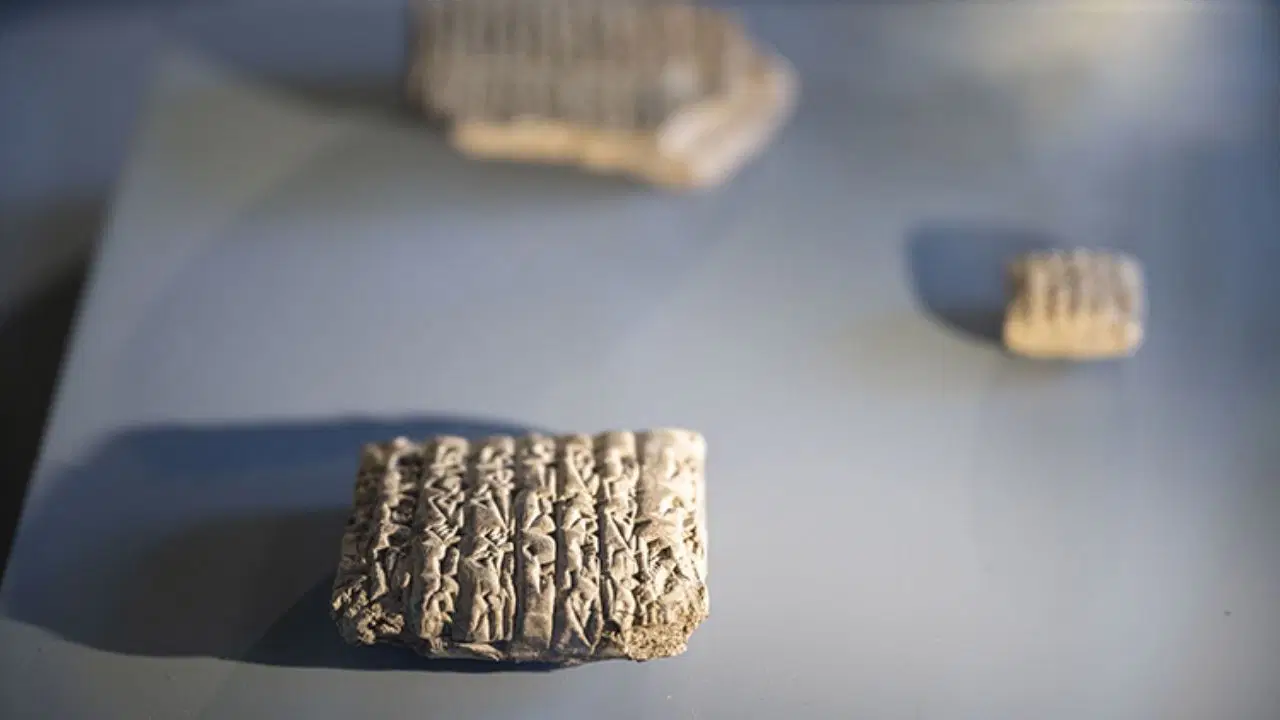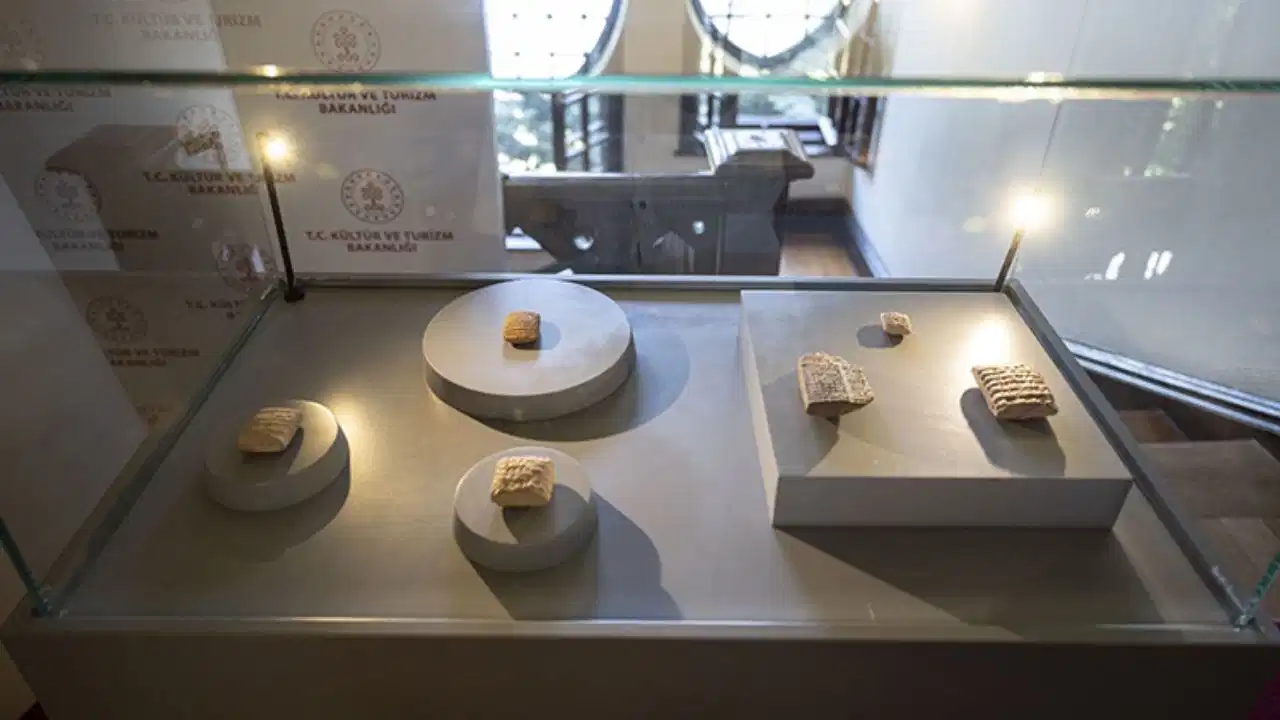Türkiye returns 6 cuneiform clay tablets

The Ministry of Culture and Tourism returned six cuneiform clay tablets containing economic, administrative and religious content from the 3rd Ur, ancient Akkadian and ancient Babylonian periods to Iraq. A ceremony for the return of the artifacts was held at the Republic Museum with the participation of Deputy Minister of Culture and Tourism Gökhan Yazgı and Iraqi Ambassador to Ankara Majid Abdulreda Hassan Al-Lachmawi.
In his speech at the ceremony, Yazgı said that Türkiye continues to show the same sensitivity towards the historical and cultural values of other nations as it does towards its cultural heritage. Stating that they returned 6 cuneiform clay tablets determined to be of Iraqi origin by scientific data to their homeland, Yazgı said that during the process of returning cultural assets to their country of origin, contact was made with Iraqi authorities through the Ministry of Foreign Affairs and information and documents were shared.

Yazgı said, "Iraqi authorities approached the process with great sensitivity and contributed to the return with the contributions of their own experts. The tablets returned today belong to the ancient Akkadian, 3rd Ur, and ancient Babylonian periods. The contents of the tablets, the writing styles and the terminology used are directly related to the centers in Southern Iraq. These tablets are unique documents in terms of scientific and cultural aspects, providing a lot of information from daily transactions to priest lists and records of valuables."
NUMBER OF CULTURAL ASSETS RETURNED TO IRAQ REACHES 97Stating that Türkiye acts in full compliance with UNESCO's 1970 resolution and the United Nations Security Council's resolutions 1483 and 2199, Yazgı emphasized that these resolutions clearly demonstrate the importance to be taken against the smuggling of cultural assets through war and illegal means.
Yazgı said, "Today's return is more than just a well-intentioned gesture, it is a reflection of international law and cultural responsibility. In this context, the number of cultural assets returned by Türkiye to Iraq has reached 97, with 4 works in 2010, 81 works in 2019, 6 works in 2022, and 6 tablets in 2025." He thanked the Ministry of Foreign Affairs, Iraqi authorities, the Anti-Smuggling Department of the Ministry of Culture and Tourism, and the staff and experts of the Istanbul Archaeological Museum for their efforts.
'A INDICATOR OF THE SPIRIT OF MUTUAL RESPECT'Iraqi Ambassador to Ankara Majid Abdulreda Hassan Al-Lachmawi also thanked Türkiye for its cooperation and support in the successful return of the Iraqi artifacts. Describing the return of the artifacts to Iraq as a gesture, Lachmawi emphasized that this reflects Turkey and Iraq's common determination to protect cultural heritage and combat illegal historical artifact smuggling. Lachmawi said, "The return of these valuable artifacts is not only a contribution to Iraq's historical heritage, but also a demonstration of the spirit of friendship and mutual respect that continues to develop bilateral relations."

The artifacts, which were returned by a volunteer collector and determined to belong to Iraq through scientific examination by experts from the Istanbul Archaeological Museum, date back to the 3rd Ur, ancient Akkadian and ancient Babylonian periods (24th-18th centuries BC), and contain economic, administrative and religious content.
One of the tablets was found to date back to the 3rd Ur Period, dating to the 22nd-21st centuries BC, and was written in the Sumerian alphabet. It was determined that the tablet contained a list of mostly priestly names, and that the style of writing and the terms used pointed to centers in Southern Iraq such as Umma.
Another tablet lists sheep and goat species in the writing system of the old Akkadian period, dated to the 24th-23rd centuries BC, and records payments made for these animals. The text in question is considered an example of an economic document. Another tablet, arranged for daily transactions, is dated to the years of the reign of the 3rd Ur Period King Ibbi-Sin (21st century BC). The writing style and content are similar to typical administrative documents of the period. The analysis and historical classification of the works were carried out by Prof. Dr. Selim Ferruh Adalı.
Cumhuriyet




